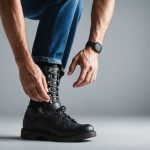In the realm of fitness and health, inclusivity can no longer be seen as an optional extra. It’s a vital aspect that needs to be woven into the fabric of every physical activity and sport. For individuals with disabilities, being active and participating in regular exercise can be a challenge due to societal, physical and psychological barriers. Therefore, designing fitness programs that are inclusive, encouraging and adapted to their needs becomes a necessity. This article aims to provide you with comprehensive steps to create a fitness program that caters to the unique needs of people with disabilities in the UK.
Understanding the Concept of ‘Inclusive Fitness’
Before you can design an inclusive fitness program, it’s crucial to understand what ‘inclusive fitness’ means. Inclusive fitness refers to a physical activity program designed to be accessible and beneficial to all participants, regardless of their abilities or disabilities. It embodies the principles of equality, respect, and support, ensuring that everyone has an equal chance to achieve their health and fitness goals.
Additional reading : What Are the Latest Trends in Heritage Craft Preservation in the UK?
This section will take you through the core principles that underpin inclusive fitness, what it entails, and why it matters. You’ll delve into the benefits of inclusive fitness for people with disabilities and explore some of the challenges that might arise when implementing such a program.
Recognizing the Unique Needs of People with Disabilities
Every individual is unique, and so are their fitness needs. This is particularly true for people with disabilities, whose requirements can often be very specific. To design an inclusive fitness program, you’ll need to understand the physical, emotional and cognitive challenges they might face during activities or sports.
Also to see : How Can UK Homeowners Utilize Greywater Systems to Reduce Water Consumption?
In this section, you’ll learn about some common types of disabilities and their associated needs in terms of physical exercise. This will help you to make informed decisions about the types of activities to include in the program, the necessary adaptations, and the appropriate support structures required to ensure a successful and inclusive environment.
Designing the Inclusive Fitness Program
With a clear understanding of the principles of inclusive fitness and the unique needs of your participants, you can now proceed to design your inclusive fitness program. This will involve selecting suitable activities, ensuring the physical environment is accessible, providing the right support, and promoting a positive and inclusive culture.
Here, you’ll delve into each of these aspects, offering practical guidance on how to implement them in your program. You’ll learn about various sports and exercises that can be adapted for people with disabilities, the essentials of accessible facility design, training strategies for your staff, and how to foster an atmosphere of inclusion and respect.
Implementing and Evaluating the Fitness Program
Once your inclusive fitness program has been designed, the next step is implementation. This involves putting your plans into action, ensuring that every aspect is properly executed. Finally, evaluating the effectiveness of your program is crucial to understand whether it’s meeting its objectives and making a positive impact on the participants.
In this section, you’ll gain insights into the practical aspects of implementing your fitness program, from arranging schedules to managing resources and dealing with challenges. You’ll also learn about strategies to evaluate your program, such as soliciting feedback from participants and monitoring their progress.
Promoting and Sustaining the Inclusive Fitness Program
After the hard work of designing, implementing and evaluating your program, the final step is to ensure its sustainability. This involves promoting the program to attract more participants, securing the necessary resources for its continued operation, and keeping the program fresh and engaging to keep participants motivated and coming back.
In this final section, you’ll discover effective ways to promote your inclusive fitness program, find resources and partnerships to support its sustainability, and learn about approaches to keep your program exciting and appealing for the long haul. Remember, the ultimate goal is to create an inclusive fitness program that’s not just a one-time event, but a longstanding commitment to promoting health and fitness for people with disabilities.
Designing the Inclusive Fitness Program
Now that you have a good understanding of the concept of inclusive fitness and the distinct needs of people with disabilities, it’s time to get down to the nitty-gritty of designing your inclusive fitness program. This process involves several key steps, including selecting suitable activities, creating an accessible physical environment, providing the right support and fostering an encouraging and inclusive culture.
Firstly, you need to ensure the selected sports and exercises are adaptable for participants with disability. There’s a wide variety of physical activities to consider, from swimming and cycling to yoga and dance. Each activity should be evaluated for its adaptability according to the specific needs of your participants. For instance, if you’re working with people living with mobility impairments, low-impact exercises that can be performed seated, like wheelchair basketball or seated yoga, may be more suitable.
Next, the physical environment plays a significant role in making a fitness program inclusive. The facilities you choose need to be accessible to all participants. This means considering aspects like wheelchair ramps, accessible bathrooms, and fitness equipment that is adaptable for individuals with disabilities.
Providing the right support is also key to your program’s success. Your staff should be adequately trained in adaptive physical education and understand how to assist people with disabilities in a respectful and supportive manner. This might involve providing one-on-one support during activities or ensuring there are clear and easily-understood instructions available.
Creating a positive and inclusive culture is the final crucial step. Encourage participants to work together and support each other. This not only fosters a sense of community but also helps people with disabilities feel more comfortable and motivated to participate.
Promoting and Sustaining the Inclusive Fitness Program
Once you’ve designed your inclusive fitness program, don’t forget about the crucial aspects of promotion and sustainability. This stage involves spreading the word about your program to attract more participants, securing resources for continuous operation, and keeping the program fresh to motivate participants to keep coming back.
One of the effective ways to promote your program is to collaborate with local disability groups or healthcare providers. They can help circulate information about your program to potential participants. Additionally, consider using social media or local newspapers to reach a wider audience.
Securing resources is vital for the sustainability of your program. This could include securing funding from sponsors or grants, seeking partnerships with local businesses, or getting support from volunteers.
Finally, ensure your program remains engaging and appealing. Regularly update your program with new activities, involving feedback from disabled young and other participants. This will keep your program fresh and exciting, encouraging individuals to keep coming back.
In conclusion, creating an inclusive fitness program for people with disabilities in the UK involves understanding the concept of inclusive fitness, recognizing the unique needs of people with disabilities, designing an engaging and adaptable program, and promoting it for sustainability. It’s a continual process that involves listening to your participants, adapting to their needs, and striving for inclusion and accessibility at all times. It may be challenging, but the rewards – seeing people with disabilities enjoy physical activity and improve their health and well-being – are immeasurable.











